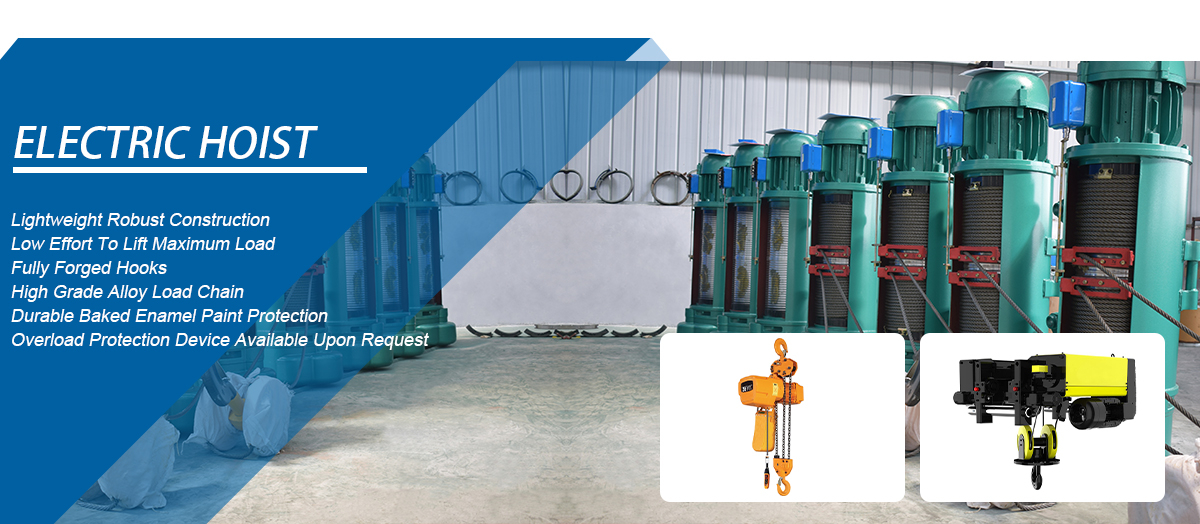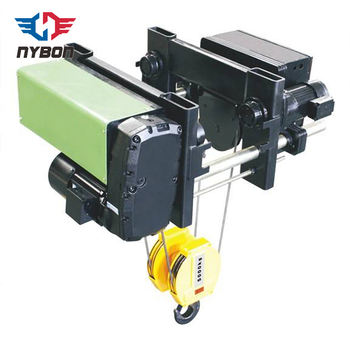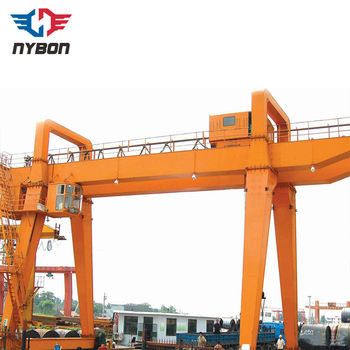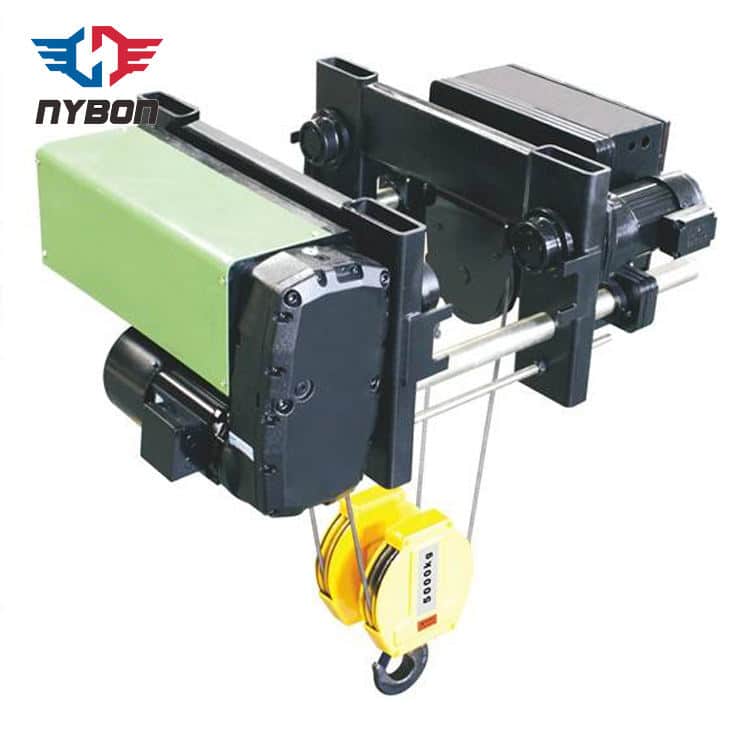Top Safety Features to Look for in Electric Hoists
Electric hoists are invaluable in industries ranging from construction to manufacturing, making lifting heavy loads easier and more efficient. However, with great power comes great responsibility—and safety should never be compromised. In this article, we’ll walk you through the top safety features to look for when choosing or using an electric hoist. After all, it’s not just about lifting; it’s about lifting safely.

Why Safety is Crucial in Electric Hoists?
Safety should always be the number one priority when using electric hoists. These devices handle extremely heavy loads, and a failure in safety mechanisms can lead to catastrophic accidents. Think of it like a car—while it’s designed to get you from one place to another, it needs a working brake system to stop you from crashing. Similarly, electric hoists rely on their safety features to prevent damage, injury, and even fatalities. Let’s dive into the key safety features that make a big difference in hoist operations.
Key Safety Features to Consider in Electric Hoists
| Overload Protection |
| One of the most crucial safety features in any hoist is overload protection. This mechanism prevents the hoist from lifting loads that exceed its capacity. Imagine trying to lift an object that’s too heavy for the hoist to handle. The stress could damage the hoist’s motor or worse, cause the load to fall. Overload protection automatically shuts down or limits the hoist when it senses the weight exceeds a safe threshold. |
| Emergency Stop Button |
| Accidents can happen in the blink of an eye. That’s why an emergency stop button is an essential feature. With a simple press, you can immediately halt all hoist activity, ensuring the safety of both the operator and the equipment. This feature is especially important in emergency situations, where time is of the essence. |
| Anti-Slip Mechanism |
| When you’re lifting or lowering heavy loads, stability is everything. An anti-slip mechanism helps prevent the hoist’s hook or load from swaying or slipping during operation. Think of it like the traction on your tires—it helps keep everything in place, reducing the risk of accidents and load shifts. |
| Limit Switches |
| Limit switches are designed to stop the hoist at predefined points—such as the top or bottom of its travel range. These switches prevent the hoist from overextending or damaging the load by ensuring it doesn’t move beyond its safe operating limits. It’s like putting a fence around the hoist’s workspace to keep it within safe boundaries. |
| Safety Brake Systems |
| A hoist safety brake is a fail-safe that prevents the load from dropping unexpectedly in case of a power failure or mechanical malfunction. Just as a parachute ensures a safe landing, safety brakes ensure that the load stays secured, no matter what happens with the hoist’s motor or power supply. |
| Temperature Sensors |
| Electric hoists generate heat when in operation. If this heat isn’t monitored, it could lead to overheating, which might cause a malfunction or even a fire. Temperature sensors are built into modern hoists to monitor heat levels and automatically shut down the hoist before it reaches dangerous levels. |
| Remote Control Safety |
| Remote control functionality is a game-changer when it comes to hoist safety. It allows operators to control the hoist from a safe distance, keeping them out of harm’s way during operation. This is especially useful in hazardous environments or when the hoist is operating at heights. Think of it like controlling a drone—you’re still in charge, but you’re not directly in the line of fire. |
Quick Reference: Electric Hoist Specs Table
| Category | Spec Range | Details | Nybon Standard |
|---|---|---|---|
| Load Capacity | 0.25 – 30 tons | Adjustable for light/heavy lifting | Up to 30 tons, reinforced alloy |
| Lifting Speed | 3 – 25 ft/min | Variable speed options available | 8–20 ft/min (optimized for safety) |
| Power Supply | 110V – 600V, 3-phase | Compatible with global voltages | 220V/380V/480V (customizable) |
| Duty Cycle | 15% – 60% | Standard to heavy-duty operations | 30%–50% (enhanced cooling) |
| Lifting Height | 10 – 100 ft | Wire rope or chain configurations | Up to 80 ft (steel wire rope) |
| Ambient Temp | -20°C to 50°C (-4°F–122°F) | Suitable for harsh environments | -10°C–45°C (standard models) |
| Control Type | Pendant/Remote/RFID | Wireless options for safety & ease | Pendant + RFID (premium models) |
Nybon Machinery’s electric hoists are designed for versatility, combining power, precision, and affordability!
Industry Standards for Hoist Safety
| OSHA Compliance |
| In the United States, electric hoists must comply with OSHA (Occupational Safety and Health Administration) standards, which are designed to protect workers from safety hazards. These standards dictate how hoists should be designed, maintained, and operated, ensuring that they meet the minimum requirements for safety in the workplace. |
| CE Marking and European Standards |
| If you’re operating a hoist in Europe, look for the CE marking. This certification indicates that the hoist complies with European safety standards, including environmental and health protection regulations. It’s a seal of assurance that the hoist meets stringent safety and quality criteria. |
Maintenance and Regular Inspections for Safety
| The Importance of Routine Checks |
| Regular maintenance is essential to ensure your electric hoist is operating safely. Even the best-built hoists can suffer from wear and tear. Regular inspections will catch any potential issues before they become big problems. Ensure that all safety features—brakes, overload protection, limit switches—are working properly. Routine checks are like preventive health checkups for your hoist! |
| Common Safety Mistakes to Avoid with Electric Hoists |
| One common mistake is failing to conduct proper training for hoist operators. If the person controlling the hoist doesn’t understand the safety features or how to use them correctly, the risk of accidents increases. Another mistake is neglecting regular maintenance or using hoists past their rated capacity. Always follow the manufacturer’s guidelines and keep your hoists in tip-top shape. |
| Final Thoughts on Hoist Safety Features |
| Choosing the right electric hoist is more than just a matter of picking a reliable brand—it’s about ensuring that every safety feature is in place and working correctly. By focusing on features like overload protection, emergency stop buttons, and safety brakes, you can reduce the risk of accidents and ensure the safety of both workers and equipment. Remember, safety is not just a feature; it’s a responsibility |
FAQs
What is the role of overload protection in hoists?
Overload protection ensures that the hoist won’t attempt to lift more than its rated capacity, preventing damage to the hoist and avoiding dangerous situations.
How often should hoists be inspected for safety?
Hoists should undergo routine inspections every 6-12 months, with more frequent checks if used in high-risk environments.
Can a remote control make hoist operations safer?
Yes, remote controls allow operators to control the hoist from a safe distance, reducing the risk of accidents in hazardous areas.
How can I ensure my electric hoist is always safe to use?
Regular maintenance, operator training, and adherence to safety standards will help keep your electric hoist safe.
Need a Crane Tailored to YOUR Industry?
At Nybon Group, we’ve built custom cranes and hoists for:
- Ports lifting cargo containers
- Mines hauling ore carts
- Shipyards deploying anchors
Talk to Our Lifting Experts!
📧 Email: info@nybonmachinery.com
📱 WhatsApp: +86-15936506686
🌐 Visit: www.nyboncrane.com
As a professional Industrial Crane Supplier, Nybon offers
- Customizable Solutions – Available in various load capacities, speeds, and configurations to meet specific industrial requirements.
- High-Quality Manufacturing – Built with strict quality standards to ensure durability, reliability, and long service life.
- Low Maintenance Requirements – Engineered for minimal maintenance, reducing downtime and operational costs.
Get A Quote Today
Welcome to send a free inquiry to —info@nybonmachinery.com





